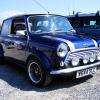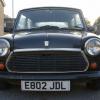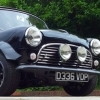Hi
I'm confused by something I've just been told about the front wheel bearing seals.
I've fitted new bearings and tapped the seals onto the bearing i.e. as far as they would go. Someone has just told me the outer seal should sit flush with the hub face. I can't see how this would work, the bearing would be loose and all sorts of contaminates would be able to get into the bearing. They seem to think that by tapping them as far in as I have that they'll rub on the bearings and cause problems.
First time I've heard this. Any advice?
Quick check in Haynes suggests I'm right ...... "tap them (the seals) fully home"
Chris

Front Wheel Bearing Outer Seal
Started by
DeadBert
, Sep 01 2012 01:53 PM
6 replies to this topic
#1

Posted 01 September 2012 - 01:53 PM
#3

Posted 01 September 2012 - 02:18 PM
I've just done mine this week and I tapped everything in as far as it would go.
#4

Posted 01 September 2012 - 07:39 PM
In most vehicles you can actually vary the seal position slightly, especially if its seating surface on the drive flange or CV is worn, so that it avoids the groove. The exact depth is not very important, as long as they are not fouling anything, and are straight.
According to the Rover manual, which should be regarded as the ultimate authority, the inner seal has a spacer, but no mention of such for the outer seal. They should be fitted with tools 18G 134 and 18G 134 DO, which would set them to the recommended depth. In the diargam, they look as if they are flush, not pushed all the way in.
Check that the drive flange is engaging the seal fully, and if not, pull it out and fit a new one.
According to the Rover manual, which should be regarded as the ultimate authority, the inner seal has a spacer, but no mention of such for the outer seal. They should be fitted with tools 18G 134 and 18G 134 DO, which would set them to the recommended depth. In the diargam, they look as if they are flush, not pushed all the way in.
Check that the drive flange is engaging the seal fully, and if not, pull it out and fit a new one.
#5

Posted 01 September 2012 - 08:09 PM
I also thought this at first, but think about what'll happen to the grease once its heated up. With the seals pushed in all the way there is nowhere for the grease to expand.
Now I do the outer seal flush with the hub and the inner seal pushed in a few mil past the machined part of the hub.
Now I do the outer seal flush with the hub and the inner seal pushed in a few mil past the machined part of the hub.
Edited by mike., 01 September 2012 - 08:32 PM.
#6

Posted 01 September 2012 - 08:12 PM
The 'seal' does nothing to locate bearings. Just knock them home. There should also be an additional outer seal to keep water away from the main seal......
#7

Posted 02 September 2012 - 05:03 PM
Yes, and the outer seal is on the inner side only, the white plastic thing, and it does not want to be pushed too far on to the CV, as it needs to sit close to the inner seal. The Rover manual refers to it as a "water shield" and says that it is to be pushed 6mm on to the CV.
Don't worry about the grease expanding. There is air between the bearings.
Don't worry about the grease expanding. There is air between the bearings.
1 user(s) are reading this topic
0 members, 1 guests, 0 anonymous users

















